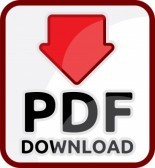М. I. Gerasimova1,2
1Faculty of Geography Moscow Lomonosov University, 119991, Russia, Moscow, Leninskie Gory
2Dokuchaev Soil Institute, 119017, Russia, Moscow, Pyzhevsky per., 7.
Two classification systems under comparison differ in objects, terminology, hierarchical levels, and approaches to identify soils. However, they have some common features: both systems are oriented to soil properties and apply the pedogenetic concepts, on one hand; on the other hand, the results, namely, some of the soil taxonomic units are similar. The second-level units of WRB, representing the classification rather than the reference base, display a certain correlation with the subtype level in the Russian soil classification system. This level in two systems may be qualified as a really active, and it contains the most complete genetic haracteristic of a soil; moreover, there is a similarity in criteria for qualifiers in WRB and genetic features (producing subtypes) in the Russian system. The difference between two classification systems is manifested in the number and essence of diagnostic horizons because they perform different functions. In the International system, they mainly serve for recognition of soils (in the key), while they directly identify genetic soil types in the Russian system.
Key words: soil properties-based systems, soil genesis, diagnostic horizons, qualifiers and genetic properties, WRB-2014.
REFERENCES
- Desyatkin R.V., Goryachkin S.V., Konyushkov D.E., Krasilnikov P.V., Lebedeva M.P., Bronnikova M.A., Fedorov A.N., Khokhlov S.F., Lapteva E.M., Mergelov N.S., Okoneshnikova M.V., Shsihkov V.A., Turova I.V. and Zazovskaya E.P. Diversity of Soils of Cold Ultra-Continental Climate (Guide-book-monograph for the “Mammoth” ultra-continental WRB field Workshop, Sakha (Yakutia)). Moscow–Yakutsk, 2013. 95 р.
- Gerasimova M.I. and Khitrov N.B. 'Comparison of the Results of Soil Profiles’ Diagnostics Performed in Three Classification Systems, Eurasian Soil Science, 2012, Vol. 45(12), pp. 1087–1094. DOI: 10.1134/S106422931212006X.
- IUSS Working Group WRB. World Reference Base for Soil Resources 2006. World Soil Resources Report No. 103, FAO, Rome. 2006. 130 p. IUSS Working Group WRB. World Reference Base for Soil Resources 2014. International soil classification system for naming soils and creating legends for soil maps. World Soil Resources Reports No. 106. FAO, Rome. 2014. 181 p.
- Classification and diagnosis of soil Russia. Smolensk: Oekumena, 2004, 342 p.
- Krasil'nikov P.V. Soil nomenclature and correlation. Petrozavodsk, 1999, 435 p.
- World correlative base of soil resources: a framework for inter-folk classification and correlation of soil, Eds. Targul'yan V.O., Gerasimova M.I., Moscow, 2007, 235 p.
- Field identification Soils Russia, Moscow, 2008, 182 p.
- Rozhkov V.A. Classiology and Soil Classification, Eurasian Soil Science, 2012, Vol. 45(3), pp. 221–230. DOI: 10.1134/S106422931203009X.
- Soil Survey Staff, 1999. Soil Taxonomy, a basic classification for making and interpreting soil surveys, 2 nd edition Agriculture Handbook 436.
- USDA, Natural Resources Conservation Service, Washington. 869 p.
- Tonkonogov V.D., Lebedeva I.I., Gerasimova M.I. Geneticheskie gorizonty v otechestvennoi I zarubezhnykh klassifikatsiyakh, Eurasian Soil Science, 1999, Vol. 32(9), pp. 1068–1075.
- World Reference Base for Soil Resources: Introduction. ISSS/ISRIC/FAO. Acco. Leuven, 1998. 165 p.
